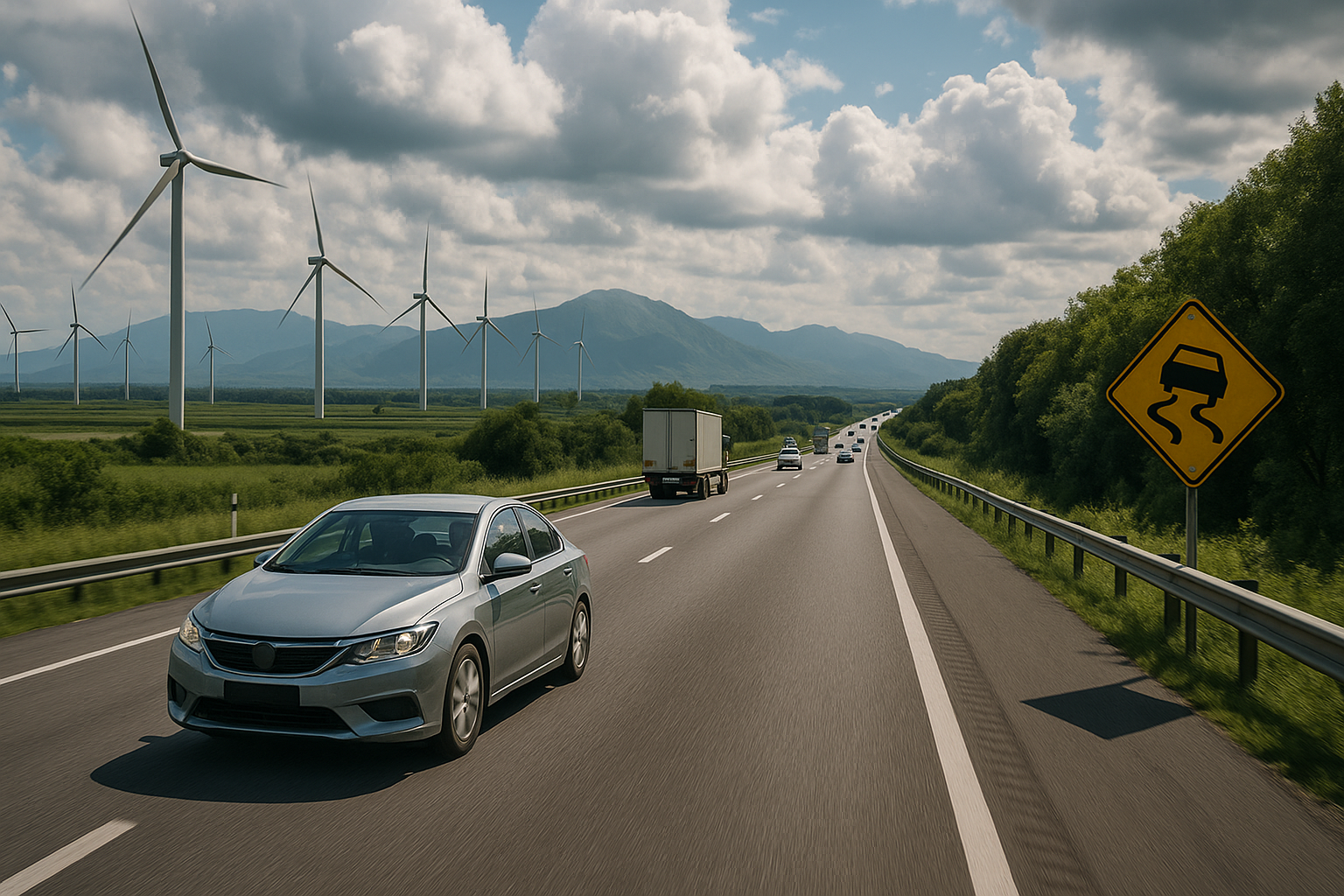Reducing Crashes and Emissions Together: A CAREC Blueprint for Smarter Mobility
The ADB and Ramboll study reveals how integrated road safety and climate measures in the CAREC region can simultaneously reduce traffic fatalities and carbon emissions. Using case studies and modeling tools, it highlights the untapped potential of coordinated transport policies for sustainable development.

A new study conducted by Ramboll, a global consultancy specializing in sustainable infrastructure, in collaboration with Ritu Mishra of the Asian Development Bank (ADB), offers a groundbreaking perspective on how transport-related policies can simultaneously advance road safety and mitigate climate change in the Central Asia Regional Economic Cooperation (CAREC) region. Published as part of ADB’s Sustainable Development Working Paper Series, the report introduces a sophisticated modeling tool that helps policymakers evaluate the interplay between road safety interventions and carbon emissions. Focusing on Georgia, Mongolia, and the Kyrgyz Republic, the research demonstrates how integrated planning can yield shared benefits for public health, the environment, and economic development, benefits that have largely gone unrealized due to fragmented policy frameworks.
Road Traffic: A Growing Threat to People and Planet
The CAREC region, comprising 10 member states including Georgia, Mongolia, Kazakhstan, and Pakistan, has witnessed a rapid expansion of road infrastructure and vehicular traffic due to economic growth. However, this development comes at a high human and environmental cost. With road fatalities in some countries exceeding 12–17 deaths per 100,000 inhabitants, far above the rates in high-income countries like Sweden or the UK, traffic-related injuries and deaths are a growing public health crisis. These crashes have an economic cost equivalent to 1%–5% of GDP annually. Meanwhile, greenhouse gas emissions from transport continue to rise, driven by increasing car ownership, limited public transit infrastructure, and outdated vehicle fleets. Although all CAREC countries are signatories to the Paris Agreement and have published Nationally Determined Contributions (NDCs), many of these documents lack specificity on transport-sector emissions, and none factor in emissions stemming from road crashes themselves.
Modeling the Intersections of Climate and Safety
The study introduces an Excel-based modeling tool designed to explore three central questions: How do road safety measures affect carbon emissions? How do climate change mitigation measures impact road safety? And what are the emissions associated with deaths and injuries from road crashes? Using country-specific data, such as vehicle kilometers traveled, road types, crash severity, and fleet composition, the model simulates the impacts of both safety and climate policies. The key innovation lies in recognizing the interdependence of these domains. For example, reducing urban speed limits not only lowers crash severity but can also reduce emissions by curbing fuel consumption while promoting public transport simultaneously cuts traffic accidents and carbon footprints.
The literature review supporting the study drew from authoritative sources such as the Handbook of Road Safety Measures, the Highway Safety Manual, the International Transport Forum’s Transport Climate Action Directory, and the Asian Transport Outlook. From there, the team shortlisted 25 road safety measures and 13 climate mitigation actions for modeling. These include speed enforcement, pedestrian crossings, and roundabout installations on the safety side, electric vehicle incentives, cycling infrastructure, and congestion pricing on the climate side.
Unseen Emissions from Road Crashes
One of the most original contributions of the study is its calculation of the environmental impact of road crashes themselves, an area previously overlooked in both climate and transport policy. Using a top-down approach inspired by life cycle assessments and healthcare emission data, the researchers estimated emissions from four post-crash domains: emergency services (such as ambulances and police), healthcare (hospital stays, equipment, and medications), vehicle and infrastructure repairs, and traffic congestion caused by crashes. Across Georgia, Mongolia, and the Kyrgyz Republic, the findings reveal that the majority of crash-related emissions come from property damage (around 61%–63%) and traffic delays (35%–37%). When minor, non-injury crashes are also considered, traffic flow disruption emerges as the largest contributor, accounting for up to 55% of the emissions total.
Three Countries, Three Scenarios, One Direction Forward
The model was tested using 2021 data and projected to 2030 under two scenarios: business-as-usual and an enhanced intervention scenario. In Georgia, where the population is expected to decline slightly, implementing both safety and climate-focused measures could result in a 35% drop in crash-related emissions, 200 fewer fatalities, and a 28% reduction in total transport emissions. Mongolia and the Kyrgyz Republic, on the other hand, face rising populations, which makes achieving the CAREC-wide goal of halving road deaths by 2030 more challenging. Still, the model shows that robust interventions could significantly reduce injuries and emissions even in these more complex contexts.
Ultimately, the study makes a compelling case for breaking down the traditional silos between road safety and climate policy. Many low-cost, high-impact actions, such as redesigning intersections, lowering urban speed limits, and subsidizing public transport, serve both agendas. The report also highlights the value of compact urban planning, transit-oriented development, and resilient infrastructure capable of withstanding climate shocks. These dual-purpose strategies, while often overlooked, are critical for building safer, greener cities.
The research is not just a technical toolkit; it’s a policy wake-up call. By demonstrating that decarbonizing transport and saving lives are mutually reinforcing goals, the study equips CAREC policymakers with the evidence and tools needed to design smarter, more integrated transport systems. The road to climate resilience and safer mobility, it turns out, may well be the same.
- READ MORE ON:
- Asian Development Bank
- ADB
- CAREC
- carbon emissions
- NDCs
- FIRST PUBLISHED IN:
- Devdiscourse
ALSO READ
Broadband Congress 2025: Merging AI with Smarter Infrastructure
Jammu & Kashmir's Industrial Boom: Overcoming Roadblocks for Economic Growth
Manipur's Stifled Highways: A Roadblock to Peace
Gadkari Highlights Bureaucratic Roadblocks Amid Abundant Funds
Bangkok-Based MSMEs Gained Most from COVID Aid, New ADB Index Study Reveals










